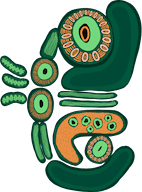
What Sugar Does To Your Teeth
There are all sorts of health benefits to cutting back on sugar. And although we’ve always known about the relationship between sugar and tooth decay, there’s increasingly more evidence about sugar’s connection with other health related conditions too. High sugar diets increase the risk of obesity, diabetes and heart disease, as well as other, often complex health issues.
How does tooth decay occur?
Sugar works its magic by partnering with bacteria which live on the surface of our teeth. There is a range of different types of bacteria and, depending on the individual, there are fewer or greater numbers of specific bacteria. Interestingly, our oral microbiome, or community of bacteria, begins at birth and is strongly influenced by our mother’s oral health and her own bacteria during pregnancy.
Whenever we eat or drink something sugary, the bacteria on the surface of our teeth eat the residue of sugar and acid is formed. This acid works like a microscopic extraction fan, pulling minerals out from the surface of the tooth. Eventually, this weakens the enamel of the tooth and dental cavities form.
Once a tooth is decayed and filled, it is never as strong as it once was. There isn’t just a financial cost in restoring teeth, but also a biological cost as well which can have a lifelong impact.
How can I reduce my risk of getting dental cavities?
There many things you can do, but among the most important is to understand how important your role is in preventing decay in the first place. Whilst your dentist will be supporting you, their role builds on what you’re doing every day between visits.
- Brush your teeth at least twice each day and use fluoridated toothpaste.
- Spit, but don’t rinse out the toothpaste. The fluoride it contains has a protective action on your tooth’s surface.
- Brush your tongue well each day. A range of bacteria grow on the tongue. One of them, Streptococcus Mutans is a primary reason for dental decay.
- Replace your toothbrush when it starts to look worn and shaggy, or every three months, whichever comes first. Remember, toothbrushes are a disposable item and need to be thrown away once they’ve reached the peak of their usefulness. A soft, small headed toothbrush with a flexible neck is ideal for reaching back teeth and small areas of a tooth’s surface.
- Clean between your teeth at least once each day. Use dental floss and interdental brushes to remove food from between your teeth. Spend some time finding the style of floss and interdental brushes that suit your teeth. The spacing between adjoining teeth varies between us all and it’s important to use the right size brush and floss to do a thorough job.
- Drink water between meals if you’re thirsty. Avoid drinking soft drinks, cordial, energy drinks or other carbonated fluids. Swish your mouth with water after snacking and drinking.
- The World Health Organisation recommends we eat no more than a total of 6 teaspoons /24 grams of added sugar each day. One teaspoon of sugar = 4 grams. Read labels of the foods you’re eating and check the amount of sugar per 100 grams. The Australian Dental Association says to aim for 10 grams or less of sugar per 100 grams.
Book an appointment to see your dentist regularly to maintain good oral health. Small issues can easily become big issues. It’s important to have your dentist monitor your teeth and give you individual support and guidance about preventative strategies.
I’ve got the munchies!
Every time we eat and drink, the sugar + bacteria = acid cycle happens again. Snacking is a good example of how eating frequency leads to repeated acid attacks. There simply isn’t enough time for the mouth to build up enough protective mechanisms to prevent decay from happening.
If you’re hungry and need a snack, reach for a glass of unflavoured milk, unsweetened yoghurt, nuts or crunchy vegetables like carrot sticks or celery. If you need a sweet treat, eat it in one sitting and then brush your teeth. This will help you to limit the acid = decay cycle.
Did you know?
Oral bacteria groups together and forms plaque, a sticky film which coats the teeth. Plaque uses the sugar we eat as a form of energy and over time, plaque grows thicker and harder to remove. That’s one of the reasons why regular dental checks are important – to remove the build-up of plaque which tooth brushing alone cannot remove.
